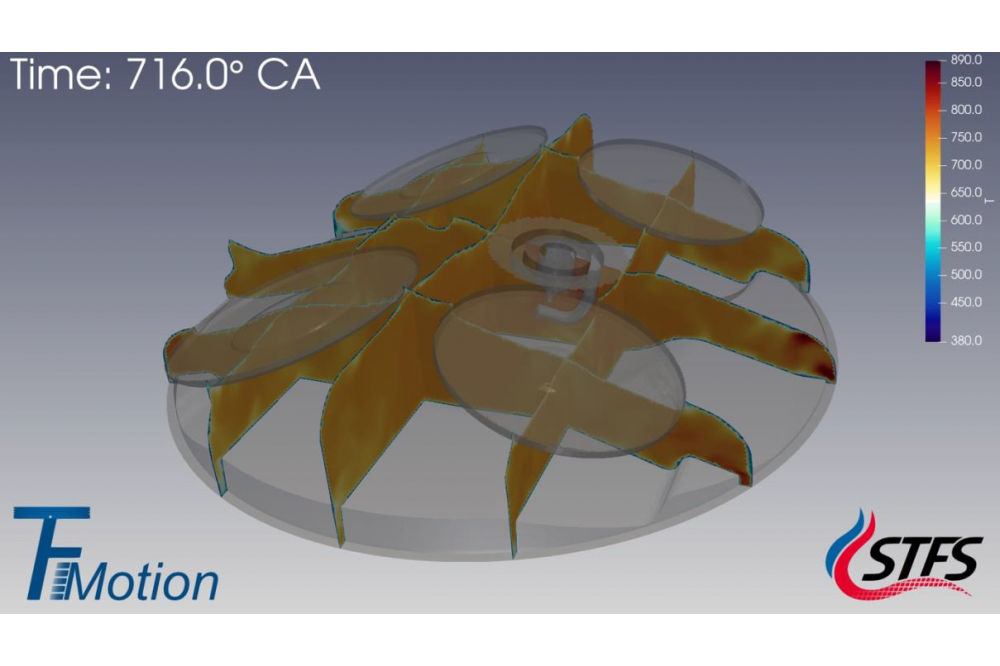Numerical Investigation and Cause-And-Effect Chain Analysis of Cyclic Variations and their Effect on Knocking Combustion
Einleitung
Engine knock is initiated by auto-ignition in the unburned mixture ahead of the flame front, the so-called end-gas. Thus, knocking combustion consists of the regular combustion process from turbulent flame propagation initiated by a spark plug and the auto-ignition. The latter directly depends on the local thermo-chemical state and mixing. Under certain conditions, auto-ignition can cause characteristic high-frequency oscillations in the cylinder pressure trace. The knock limit is usually defined based on the knock amplitude and the tolerated frequency of knocking cycles. This knock limit strongly depends on the specific engine and the combustion process. Depending on the difference between the optimum spark timing (from a thermodynamic viewpoint) and the spark timing at the knock limit, substantial efficiency losses can occur. Despite the high technical relevance, the underlying mechanisms that trigger the transition from non-knocking to knocking combustion are only partially understood from a scientific point of view. The main reason being, in addition to the generally high complexity, that it is very challenging to investigate the first knocking cycles experimentally and/or numerically.
Methoden
Engine Simulations are performed utilizing an in-house developed framework based on the open-source toolbox OpenFOAM. It is capable to perform preprocessing steps as the generation of meshes as well as the management of the full cycle simulations.
The turbulent flow is accounted for incorporating Large Eddy Simulations (LES). The turbulent flame propagation during combustion is simulated with tabulated chemistry. Tabulation of chemistry is based on the flamelet-concept. Auto-ignition as a precursor of knock is modeled by a generalized Knock Integral Method applicable to LES involving tabulation of the ignition progress. The investigation of the interaction between the models for combustion and auto-ignition is a major challenge of this project.
Ergebnisse
The LES modeling is used for multi-cycle simulations of a gasoline engine. Starting with homogeneous port-fuel operating points, direct injection is considered afterwards to understand the effect of inhomogeneities on the first auto-ignition events. The combination of LES and experimental results will be used for a coordinated backward analysis jointly carried out aiming to understand the cause-and-effect chain between flow structures, flame propagation, local temperature and mixture inhomogeneities/stratification and the occurrence of the first auto-ignition events.
Diskussion
In the first phase of the HLR project preparation of the engine simulations was performed: Mesh generation and analysis, cold flow simulation with turbulence modelled by RANS and LES approach. The established workflow was used to investigate the mixture formation inside the engine until the spark timing. Figure 1 shows an exemplary result of the mixture field. It can be seen that the field of reactants is heterogeneous to some extent. In Figure 2 the temperature stratification at spark timing is shown. It is assumed that gradients in the mixture and temperature will have an influence on the occurrence of autoignition and thus knock. Those results are the starting point for investigation of flame propagation and knock to be performed in the next project phase.





